By Shannon Miller
Assistant News Editor
Melanie Mallios, a senior art major, produces art that challenges the mind. Those who attended the reception for her honors thesis show, The Limbic Lens, in the S.A.L. Gallery on Feb. 21, stepped into a display of her ever- evolving subconscious.
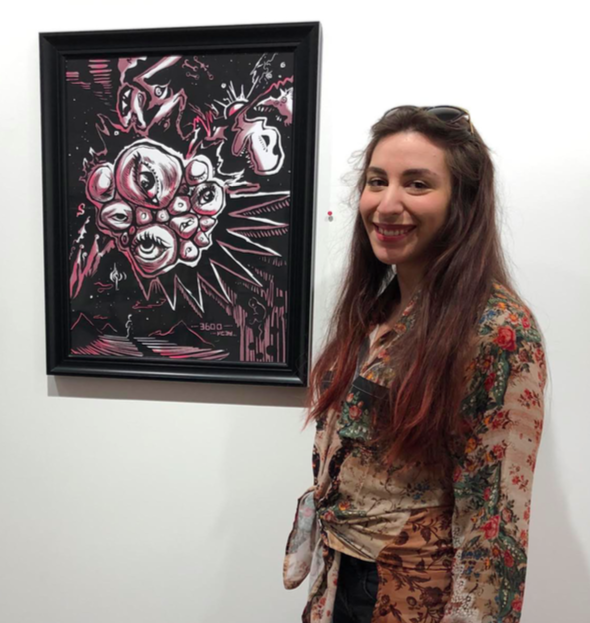
Mallios began experimenting with art as a young girl, creating unique illustrations and characters inspired by her own imagination. Now 27 years old, her artistic dynamic incorporates the esoteric and profound essence of the 20th century avant-garde movement, surrealism.
She was inspired by iconic historical figures such as Salvador Dalí and Sigmund Freud.
Dan Christoffel visited the reception to admire his student’s work. Her work “goes beyond surrealism,” he said. He appreciates her ability to tell a story through her art while simultaneously allowing observers to bring their individual stories into her pieces. “Of all student shows, this is the most varied in terms of techniques, approaches, skills. She has a high level of skill,” Christoffel said.
Though her art appears philosophical, hidden throughout her paintings, sculptures, print work, and drawings are little amusing details; some added for a metaphorical purpose, according to Mallios, and others simply because she “thought it would be funny.”
Hanging in one corner of the room was a mockup-caricature drawing of Bob Ross, late painter and host of PBS’ instructional television show, “The Joy of Painting.” Mallios titled the piece “Boobie Ross.” Directly below that piece was her mixed-media rendition of the famous painting, “Madonna of the Lilies.” Etched into the Virgin Mary’s halo of light is the repeated pattern of Pickle Rick, a character from the adult animated science-fiction cartoon, “Rick and Morty.”
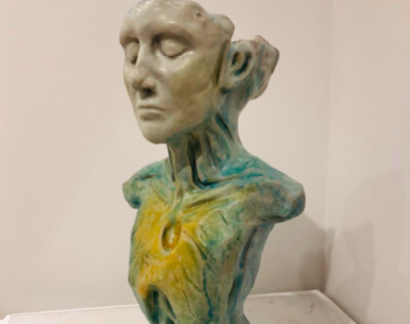
In the opposite corner of the room, focusing more on abstract thought, was a clay sculpture of half man-half statue, inspired by the Greek folk-song, “Agalma,” which means statue in Greek.
Mallios described the song’s theme. “He [the singer] talks about how he was in this kind of city square and with his lover; and there was a statue there watching them kiss and have fun and everything. And years later, he comes back to the statue, and she had cheated on him, so he goes back to the statue and tells the statue what happened; and then he saw the statue crying, and then the statue started comforting him, and then they parted ways.” Her sculpture reflects the human element within the statue; a golden color radiates from below its torso, implying the existence of a heart. “The statue is empathizing,” she said.
Complementing each other, were two wood pieces that Mallios was especially proud of. “For some reason drawing on wood feels more intimate,” she said. “It feels closer to nature. You’re scribbling on it, and you can feel it. It just feels more earthy. It’s a good canvas to draw on.”
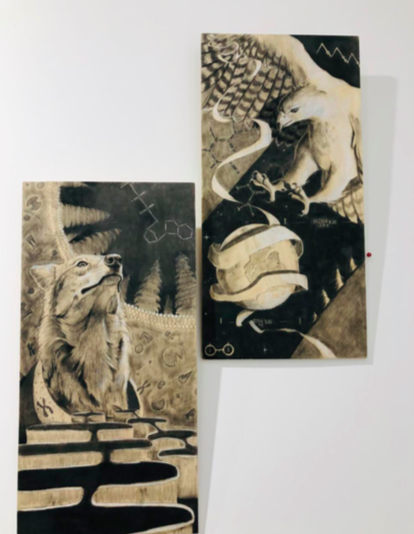
One of the wooden pieces portrayed a dog looking up into the sky, who according to Mallios, exists in the “microsphere.” On the second piece, a hawk is flying in the sky looking down over the earth, representing the “macrosphere.” She titled the pieces “Philosophers” be- cause the hawk represents the question of why, and the dog represents the question of what. “One is the offshoot of the other,” she said.
Victor Zhao, a freshman digital art and design major, is fond of the dark tones in one of the digital prints on display. “It’s really well- drawn,” he said.
Mallios’ favorite form of art is printmaking. She experiments with monotype prints, which are drawn on plexiglass, and then put into a press to produce a ‘one of a kind’ print.
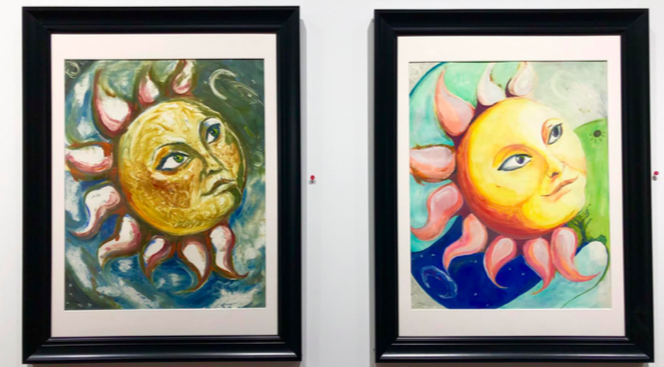
Others are made with a zinc plate. With this type, she etches into the plate with a needle to create grooves that hold the ink. Because of the grooves, the plate can be put through the press several times, therefore, creating more than one copy of the print, according to the artist. “You’re basically just making copies that you can do different things with,” she said. “And they all have different auras about them de- pending on the colors you use.”
Mallios plans to study biology after completing her B.F.A. to better prepare for her desired career choice; she wants to be a medical illustrator. The idea came from a former counselor who told her that a friend’s daughter was illustrating diagrams for textbooks, she said.
But Christoffel believes she can also be an illustrator for magazines and stories. “She can play both worlds,” he said. “The big thing is, she just had it [talent] when she was young; and here, she has just refined her skills. And with an imagination like this, there is no better combination than that.”



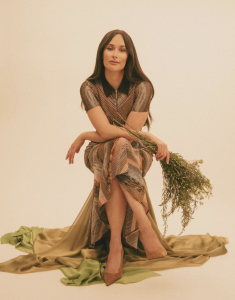
Be First to Comment